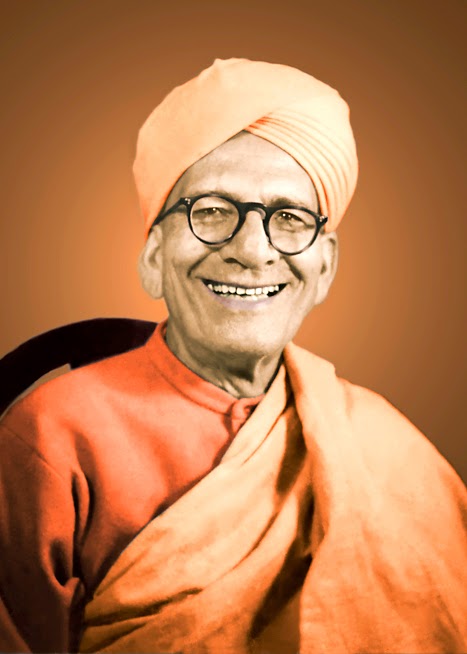 The Venerable Divine Master, the Apostle of Ram-Naam, the Dispenser of Naam-Deeksha and the Votary of Lord Ram is the lovingly remembered by his devotees as “Maharaj”.
The Venerable Divine Master, the Apostle of Ram-Naam, the Dispenser of Naam-Deeksha and the Votary of Lord Ram is the lovingly remembered by his devotees as “Maharaj”.
He is the founder of ‘Shree Ram Sharnam’.
He was one of those rare godmen who realized God directly while worshipping the “Formless” without any Guru in physical form.
His path was very difficult but he made easy the path for others.
The revered Master was born on April 26,1861( Shukal Puranmasi of the Indian month of Chaitra) at 5 a.m. in a Brahmin family of Jaggu Ka Mora, a village of Rawalpindi (now in Pakistan). He was the only child of his parents. He had no memory of his mother and father─ both died when he was a toddler.
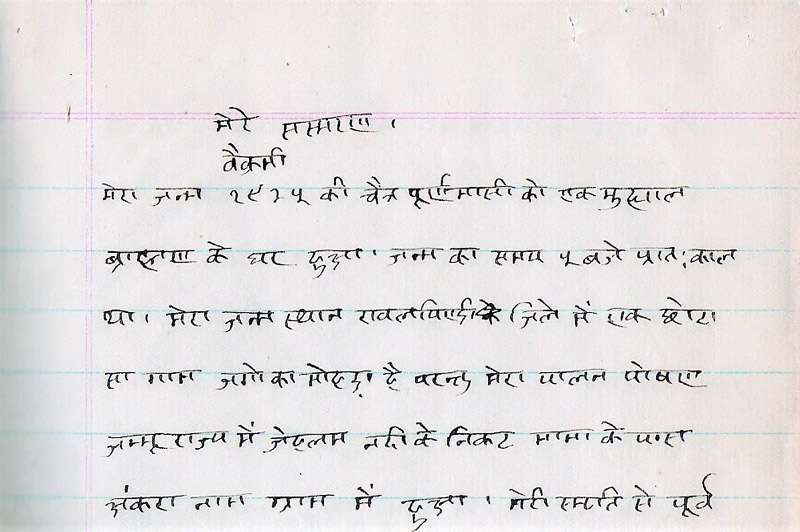
His name was Gobind for paternal grandparents, but he was called Lakshman by his maternal grandparents. He was brought up by his maternal grandparents in a village Ankara on the banks of the Jhelum river in Jammu.
The maternal grandparents also died when he was ten. Somehow he sought the company of the learned saints and seers well-versed in Sanskrit. But he was a precocious child and made a quick progress in learning.
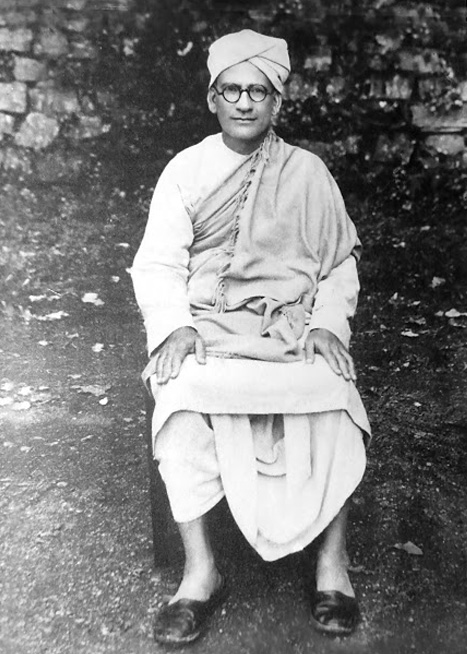 At the tender age of 17, the young seeker joined the company of Jain sadhus. At the age of 19, he became a Jain Yati. He undertook a deep study of the Jain scriptures which did not pin faith in God. He was an antagonist of God. Fortunately, he came by a book, ‘Adhyatmic Chikitsa’’ which recommended “faith in God” as the pre-condition.
At the tender age of 17, the young seeker joined the company of Jain sadhus. At the age of 19, he became a Jain Yati. He undertook a deep study of the Jain scriptures which did not pin faith in God. He was an antagonist of God. Fortunately, he came by a book, ‘Adhyatmic Chikitsa’’ which recommended “faith in God” as the pre-condition.
He was 29, yet he had no faith in God. With silence on God, he undertook spiritual practices recommended in the book. During this period, Swamiji undertook all these spiritual practices at night during Chaturmas(4-month Rainy Season) at Ludhiana.
These practices resulted in his firm belief in Sat-Chit-Anand(the True, the Conscious & the Blissful God). A sea change came in him. He became a firm believer in God. It was a turning point in his life.
 The young seeker was formally initiated into Arya Samaj and became a renunciant. He became a monk of the Swami Order. Swami Satyanand Ji became a very powerful exponent of the Arya Samaj—a vibrant movement of reform among the Hindus.
The young seeker was formally initiated into Arya Samaj and became a renunciant. He became a monk of the Swami Order. Swami Satyanand Ji became a very powerful exponent of the Arya Samaj—a vibrant movement of reform among the Hindus.
By now he was not only a firm believer in God, but he also wanted to explore God much farther. His search for God became a passion for him. He extensively traveled for 25 years and gave powerful discourses on the Vedas.
His lectures used to reflect a deep knowledge of the Vedas, Vedanta, Upanishads, the Mahabharata, and the Ramayan. During this period, he wrote two books—Onkar Upasana and Shri Dayanand Prakash. His passion for God became deeper and deeper.
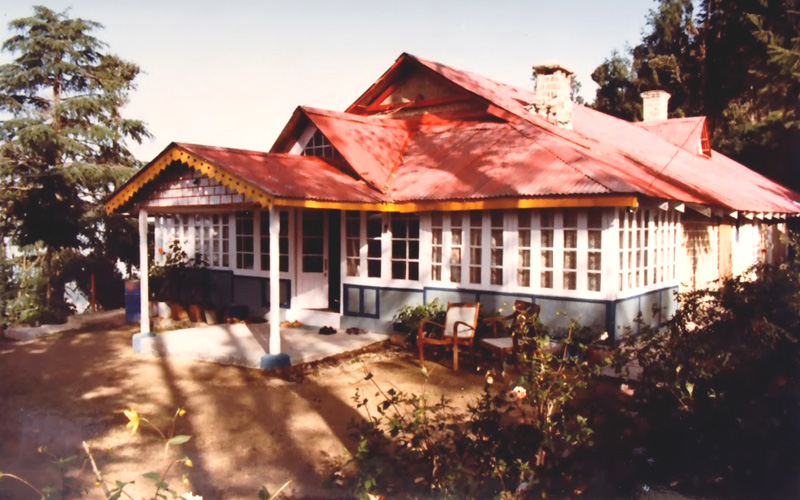 In 1925, he resolved to go to a solitary place in search of God. He went to Dalhousie and chose to seek God in the sylvan surroundings of the Narwood Cottage (now known as the Param Dham Shree Ram Sharnam Ashram). He sat in rigorous penances in the pin-drop silence of the hills.
In 1925, he resolved to go to a solitary place in search of God. He went to Dalhousie and chose to seek God in the sylvan surroundings of the Narwood Cottage (now known as the Param Dham Shree Ram Sharnam Ashram). He sat in rigorous penances in the pin-drop silence of the hills.
His rigours went on and on for a month with an occasional morsel from the food-bowl placed daily one time at the door of his Prayer Room. After about a month-long silent prayers and penances in the silence of the paradisical hills, Swamiji got Enlightenment on July 7, 1925, that is, on the auspicious day of Guru Purnima or Vyas Pooja. He heard the Holy Name— “RAM”( ra:mə) in an uncanny sound.

He thought that some devotee of Ram had made this honeyed utterance. He closed his eyes and again heard the Enchanted Utterance: “RAM,RAM”. He was further ordained: “RAM BHAJ, RAM BHAJ, RAM, RAM”. These were no ordinary words of this mortal world. He was thrilled. He experienced fine tremors all over his being. Swamiji yearned for a face-to-face meeting. The Divine Voice relented and asked: “In which form will you like to see me?” To this Swamiji replied, “In your real Form.
How can I dictate my Lord?” After this, the Divine Power appeared in the shape of the Holy Word— jke . The Divine Word appeared in the full Divine Refulgence, unmatched by the combined light of a thousand suns.It was highly dazzling. Later Swamiji tried to recapture it in the form of ‘Adhishthan’. Adhishthan can be called a close facsimile of the Divine Form seen by Swamiji Maharaj.
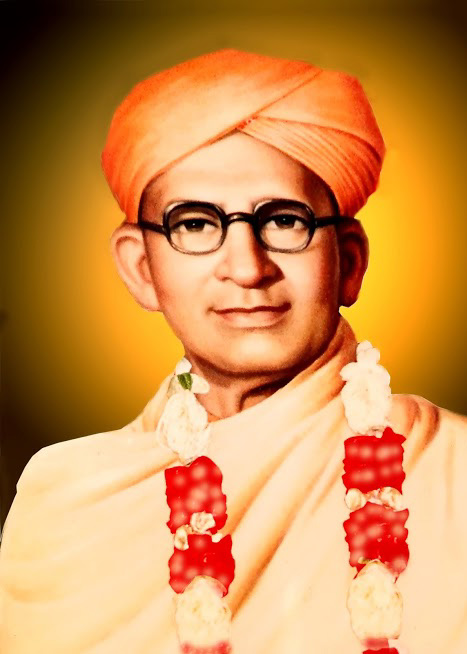 Now Swamiji was a fully Enlightened Master. He heard a Divine Order: “The world is in distress. It is miserably stuck in the mire of worldly attractions and attachments. Go forth and wash down its mud with the Holy Water of Ram Naam”.
Now Swamiji was a fully Enlightened Master. He heard a Divine Order: “The world is in distress. It is miserably stuck in the mire of worldly attractions and attachments. Go forth and wash down its mud with the Holy Water of Ram Naam”.
Under Divine inspiration Swamiji wrote, Bhakti Prakash. The Arya Samaj leaders requested him to replace the word ‘RAM” with “Om”. Swamiji rejected the idea.
He opted out of Arya Samaj & the high position which he held. He said, “It is not my writ . It is a Divine Writ . How can I afford to alter it?”. Swamiji parted with the Arya Samaj.

In 1928, he began initiating his followers with Ram-Naam. He did it in a spirit of humility & service. He undertook long and arduous journeys to initiate his followers.
Swamiji Maharaj started holding 4 to 5 day-and-night Training Satsang (Sadhna Satsang) for the spiritual trainees. The first of this kind was held in Haridwar in 1934.
He always underlined the importance of Satguru (True Master), Simran ( Repeating the Holy Word) and Sewa ( Service to Humanity). He did not advocate to escape from life or renunciation. Rather he advised a devoted and dedicated family life but without unnecessary attachment or over-attachment

Swami Satyanandji held the first Sadhana Satsang at Haridwar in December 1936. During the period Swamiji handpicked five disciples to form Shree Ram Sewak Sangh in order to spread faith in Ram. They took an undertaking to spread the holy name ” Ram“.
This brief but solemn ceremony was held on the banks of the holy river Ganga, above Bhim Goda at a place known as Sapt Sarovar. Pujya Pitaji (Sh. Hans Raj) was one of these five beloved disciples while the other four were Sh. Vaishnav Dass, Sh. Ram Krishan, Swami Ramanand and Swami Raja Ram.
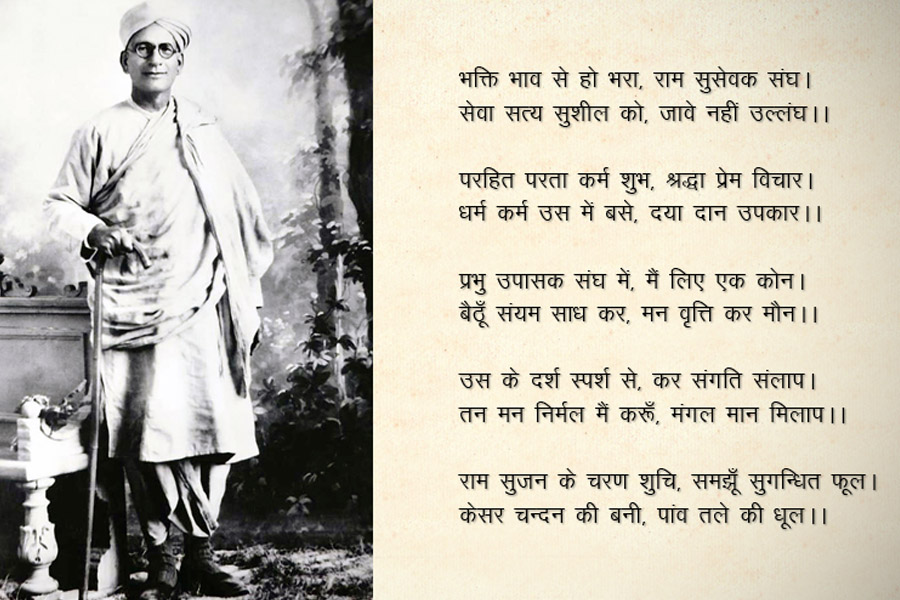
Swami Satyanand Ji Maharaj authored ten scriptures after God Realization . All his scriptures are in Hindi language. These are Amritwani, Bhakti Prakash, Valmikiya Ramayana-sar, Shree Bhagwat Gita, Akadashopnishad Sangrah, Prarthana Aur Uska Prabhav, Upasak Ka Aantric Jeevan, Bhakti Aur Bhakt Ke Lakshan, Sthitpragya Ke Lakshan, Bhajan Avam Dhavani Sangrah. Maharajji was in Palampur when he wrote Amritwani.
Today, Palampur has become a place of pilgrimage for his devotees and every year Meditation Sessions and Satsanga are organized at Palampur.
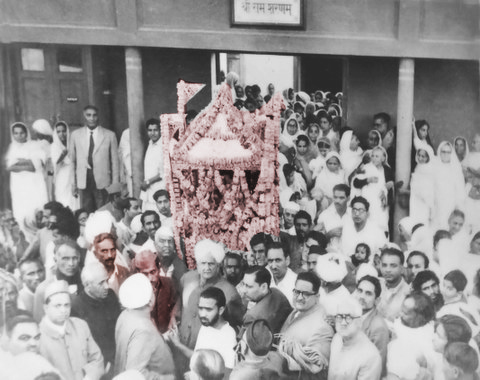
Throughout his life, Swamiji enjoyed good health. A week before his final exit from life, Swamiji’s consciousness went inward. On November 13, 1960, Swamiji started a very rapid Ram Jaap at about 8.30 p.m. Few of his disciples were at his bed side. At 10 p.m., Swamiji opened his eyes, waved his blessings to all bystanders and entered Mahasamadhi at the ripe age of 91 at 21, Bungalow Road, New Delhi.
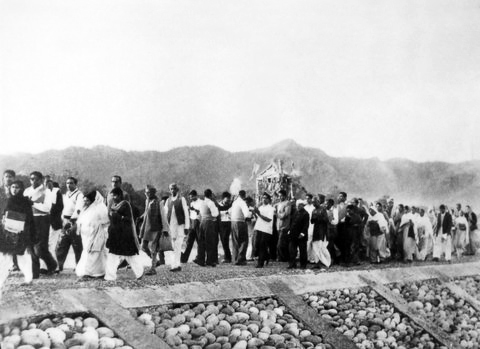
His body was taken to Haridwar, kept in Shree Ram Sharnam there, given a final farewell according to Sanyasi rituals, placed in a decorated Hindola, taken around the city in a large procession with a mix-up of the sounds of the conches, bells, and bands.
The Hindola was taken to Neeldhara & the Swamiji was given a final farewell in the sacred waters of the Ganga, the holy river of India. True to his word, when Swami Satyanandji gave up his mortal frame, he had no pice in his pocket, no piece of land, no bank account & not a single almond from any offering. His books are his best memorials. “No memorial need be built”, Swamiji foretold his disciples.
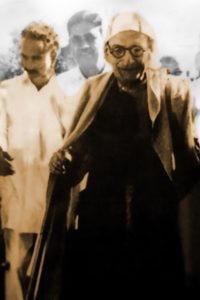
After the Mahasamadhi of Swami Satyanandji Maharaj, there was a great void. However, his spiritual disciples started holding satsangs in many places. Over the years, millions of people have found inner bliss and embalmed their Souls with the Divine ‘RAM’ Naam.
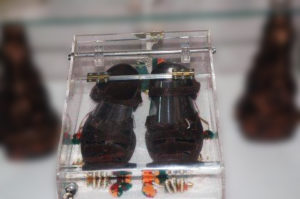
In Pujya Pitaji’s words, “ We are all teachers of the same school. The curriculum, to be taught is also the same. The method of teaching has also been set by Swamiji Maharaj, only the way of expression is different. But we all are dedicated to completing the work entrusted to us by Gurudev(Swami Satyanandji).